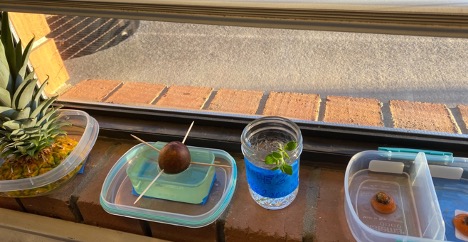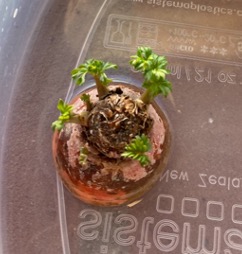Children Learning About Gardening
go.ncsu.edu/readext?856452
en Español / em Português
El inglés es el idioma de control de esta página. En la medida en que haya algún conflicto entre la traducción al inglés y la traducción, el inglés prevalece.
Al hacer clic en el enlace de traducción se activa un servicio de traducción gratuito para convertir la página al español. Al igual que con cualquier traducción por Internet, la conversión no es sensible al contexto y puede que no traduzca el texto en su significado original. NC State Extension no garantiza la exactitud del texto traducido. Por favor, tenga en cuenta que algunas aplicaciones y/o servicios pueden no funcionar como se espera cuando se traducen.
Português
Inglês é o idioma de controle desta página. Na medida que haja algum conflito entre o texto original em Inglês e a tradução, o Inglês prevalece.
Ao clicar no link de tradução, um serviço gratuito de tradução será ativado para converter a página para o Português. Como em qualquer tradução pela internet, a conversão não é sensivel ao contexto e pode não ocorrer a tradução para o significado orginal. O serviço de Extensão da Carolina do Norte (NC State Extension) não garante a exatidão do texto traduzido. Por favor, observe que algumas funções ou serviços podem não funcionar como esperado após a tradução.
English
English is the controlling language of this page. To the extent there is any conflict between the English text and the translation, English controls.
Clicking on the translation link activates a free translation service to convert the page to Spanish. As with any Internet translation, the conversion is not context-sensitive and may not translate the text to its original meaning. NC State Extension does not guarantee the accuracy of the translated text. Please note that some applications and/or services may not function as expected when translated.
Collapse ▲Students in the Discovery Program, Hayesville Elementary after school program, have been learning about seeds and will be designing a Sensory Garden. There are two 4-H volunteers visiting the group once a month to teach the students about gardening. Each volunteer is also an Extension Master Gardener in Clay County.
The first lesson was about propagation. The students were given various items to watch them sprout. (avocado, carrot, celery, pineapple, mint)


The next time the Master Gardener volunteers visited the classroom, the students learned about the water cycle by creating their own terrariums.
The group met a few days before the first day of Spring so they could plan their garden. Wooden blocks and graph paper were provided so the student’s design for the raised bed garden would be to scale. Each student will draw a design to help in the garden planning.
On the same day, each student was given a 6 cell container to plant seeds for the raised beds. Once the sown seeds are big enough they will be transplanted.
The first day of April brought the first layer of the raised beds. The students used a LOT of math to determine the layout of the raised bed. Besides measuring, they were able to use the diagonal of the square to make sure the sides were parallel and the angles were 90 degrees.
The children enjoyed completing the raised beds. Each raised bed had 4 children working as a team to lay the second layer of block, hammer rebar to hold the blocks, and then empty bags of soil.
The next step is to put in the plants and seeds. Hopefully we will do that soon, as long as the weather holds out. However, planning around the weather is something to learn when having a garden. The plants are in!!









